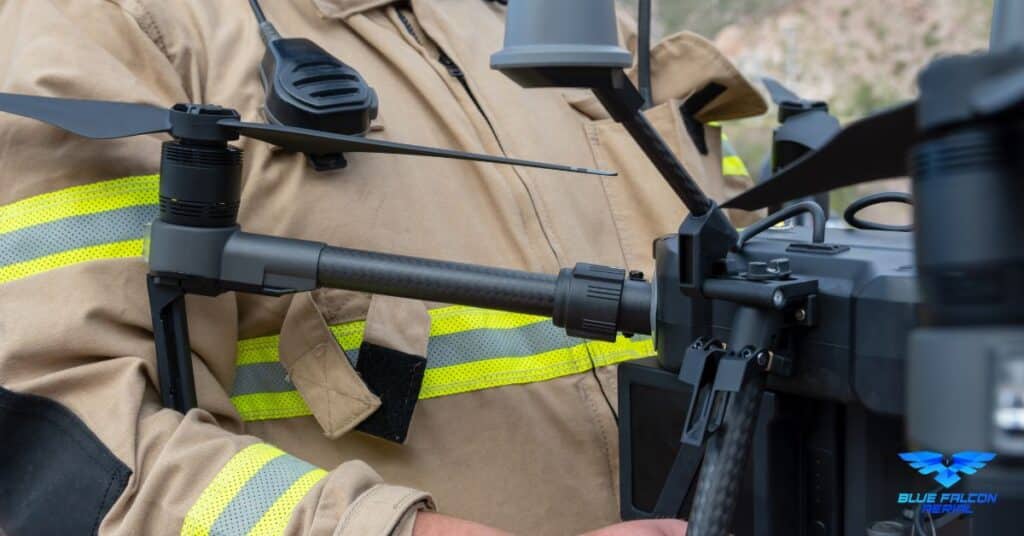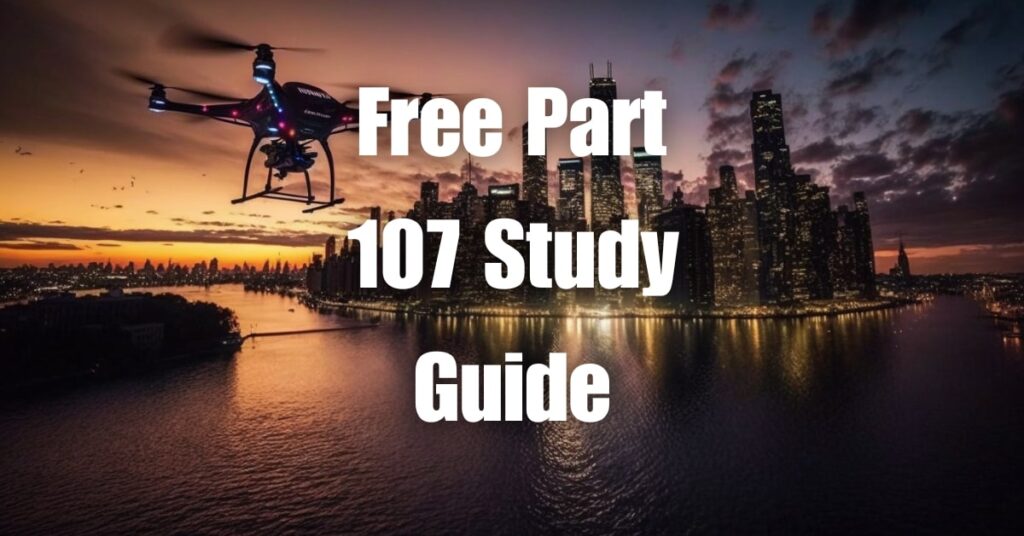The paradigm of search and rescue operations has been completely transformed with the advent of drone technology. Not merely a tool for aerial photography or recreational fun, these unmanned flying marvels have found a significant role in life-saving missions. Welcome to the exhilarating era of drone-assisted search and rescue. These versatile machines are no longer confined to the realms of science fiction, but are instead pioneering in one of the most challenging areas – rescuing humans in distress. With their capacity to navigate challenging terrains, capture high-definition imagery, and substantially reduce search times, drones are revolutionizing rescue missions and ushering in a new age of emergency response.
What is Drone-Assisted Search and Rescue?
Drone-assisted search and rescue, also known as UAV (Unmanned Aerial Vehicle) SAR, refers to the use of drones to augment traditional search and rescue operations. These machines offer a bird’s eye view, enabling rescuers to cover a vast area in a short period of time, even in challenging terrains and harsh weather conditions.
The Evolution of Drone Technology
Drone technology has come a long way since its inception. Originally developed for military purposes, drones have made their way into numerous civilian applications, one of the most impactful being search and rescue missions. Early drones were expensive, had limited flight times, and were equipped with rudimentary cameras. Today’s drones, however, have advanced significantly in terms of battery life, imaging capabilities, and affordability.
Impact on Search and Rescue Operations
The integration of drone technology in search and rescue has been nothing short of revolutionary. By leveraging advanced imaging techniques, such as thermal imaging and high-resolution video, drone-assisted search and rescue can accurately locate and assess individuals in distress. This reduces the time and resources needed for rescue operations, enabling teams to act swiftly and efficiently.
The Advantages of Drones in Search and Rescue Missions
Incorporating drones into search and rescue missions offers several benefits that significantly enhance the effectiveness of rescue efforts.
Improved Accessibility
Drones can reach areas that are challenging or dangerous for humans and traditional machinery. Whether it’s a dense forest, a steep mountain, or a rough sea, drones can navigate these terrains effortlessly, providing rescuers with vital information.
Time Efficiency
Time is of the essence in any rescue operation. Drones can cover a wide area quickly, providing real-time visuals that help in identifying the location of the person in need. This rapid response can be crucial in determining the outcome of a rescue mission.
High-quality Imagery and Real-Time Data
Equipped with high-resolution cameras and often thermal imaging technology, drones can provide clear visuals and invaluable data to rescue teams. This information can guide rescuers, helping them make informed decisions swiftly and confidently.
Enhanced Safety for Rescuers
In addition to locating and assisting individuals in distress, drones also contribute to the safety of the rescue teams. By providing an aerial perspective and detailed situational awareness, drones allow rescuers to plan safer paths and strategies, reducing the risk of accidents or injuries.
Cost Efficiency
Drones represent a cost-efficient solution in search and rescue operations. Compared to the costs associated with traditional rescue methods, such as helicopters or extensive ground teams, drones offer a significantly less expensive yet highly effective alternative. This cost efficiency makes drone-assisted search and rescue an increasingly preferred choice for emergency response teams around the world.
Types of Drones Used in Search and Rescue
In the world of search and rescue, not all drones are created equal. Different missions may require different drones, each equipped with unique features and capabilities to handle various challenges.
Fixed-Wing Drones
Fixed-wing drones are known for their long flight times and high speeds. Due to their aerodynamic design, they can cover large distances, making them ideal for search and rescue operations over expansive terrains.
Multi-Rotor Drones
Multi-rotor drones offer exceptional maneuverability, precise positioning, and the ability to hover in one place. These drones are often used in situations that require close-up views or meticulous inspections of a specific area.
Hybrid VTOL Drones
Hybrid VTOL (Vertical Take-Off and Landing) drones combine the best of both worlds. They can take off and land vertically like multi-rotor drones, but once in the air, they can transition into a more efficient fixed-wing flight. This makes them highly versatile for a wide range of search and rescue missions.
Thermal Imaging Drones
Regardless of the design, drones used in search and rescue missions are often equipped with thermal imaging cameras. These cameras can detect heat signatures, making it possible to locate individuals even in low visibility conditions such as night-time or dense foliage.
Drone-Assisted Search and Rescue Techniques and Best Practices
Deploying drones in search and rescue operations involves more than simply flying them over an area. It requires strategic planning, knowledge of best practices, and adept use of technology.
Pre-Mission Planning
Before launching a drone, teams need to conduct thorough pre-mission planning. This includes studying the geography of the area, understanding weather conditions, and identifying potential challenges.
Real-Time Data Analysis
Drones can stream real-time video and data to the command center. However, this influx of information is useful only if it is properly analyzed. Teams need to have systems in place for real-time data analysis to quickly locate individuals in distress.
Integration with Traditional Methods
Despite the advanced capabilities of drones, they are not a replacement for traditional search and rescue methods. Rather, they are tools that augment these methods. Teams need to know how to seamlessly integrate drone operations with ground or water-based search and rescue tactics.
Regular Training and Practice
Like any tool, drones are only as effective as the person operating them. Regular training and practice sessions are essential to ensure that drone pilots can handle the machines in various conditions and situations.
Follow Regulations
Drones, especially those used in critical operations like search and rescue, are subject to various regulations. Operators must be familiar with and adhere to these regulations to ensure safety and legality of their missions.
Regulations and Training for Drone-Assisted Search and Rescue
Operating drones for search and rescue missions isn’t simply about purchasing a drone and launching it. To ensure safety and legality, drone pilots need to adhere to certain regulations and undergo specific training.
Understanding the Regulations
Different regions have various laws regulating the use of drones. For instance, in the United States, the Federal Aviation Administration (FAA) oversees all civil aviation, including drones. Under the FAA rules, operators must adhere to guidelines such as maintaining the drone within visual line of sight, avoiding flights over people or moving vehicles, and not exceeding certain altitude and speed limits. Drone operators must also obtain necessary certifications and permissions depending on the type of operation. It’s crucial to understand and adhere to the regulations in your specific area of operation.
Training Requirements
Operating drones, particularly for something as critical as search and rescue, requires a certain level of expertise. Several organizations and training centers offer specialized courses for drone pilots. These training programs cover a wide range of topics, such as understanding drone technology, piloting skills, safety procedures, data collection and analysis, and specific techniques for search and rescue.
Case Studies of Successful Drone-Assisted Search and Rescue Missions
Drones have revolutionized many industries, and one area that has greatly benefitted from this technology is search and rescue. These unmanned aerial vehicles are capable of covering large areas quickly, accessing hard-to-reach locations, and providing real-time information to rescue teams. The following sections delve into real-world examples of successful drone-assisted search and rescue missions that saved lives.
Hurricane Harvey
In August 2017, Hurricane Harvey wreaked havoc in Houston, Texas, causing widespread flooding. The Texas Military Department deployed drones for search and rescue efforts. These drones, equipped with cameras, captured high-resolution images and transmitted them in real time to the command center. This helped locate people stranded in floodwaters, enabling rescue teams to dispatch boats to their locations. The drones also assessed the damage caused by the hurricane, identifying areas that required immediate attention1.
Hikers in California
In May 2020, two hikers lost their way in California’s San Gabriel Mountains. After the hikers had been missing for over a week, the Los Angeles County Sheriff’s Department employed search and rescue drones. The drones, armed with cameras and thermal imaging technology, flew over the rugged terrain, detecting body heat. This led to the location of the missing hikers, enabling a ground team to successfully execute their rescue2.
Missing Person in Wisconsin
In June 2020, a woman disappeared in a remote area of Wisconsin. The dense forest cover and rugged terrain hampered search efforts. The Sawyer County Sheriff’s Office used a drone equipped with a high-resolution camera to assist with the search. This drone flew over the dense forest, capturing images that ultimately led to the location and rescue of the missing woman3.
Additional Examples
Nepal Earthquake: In April 2015, drones were used in the aftermath of a 7.8 magnitude earthquake in Nepal. Drones equipped with thermal payloads were flown over the rubble and debris to locate trapped survivors. The drones also helped map the disaster area and identify areas that were inaccessible to rescue teams on the ground2.
Australian Bushfires: In January 2020, drones were used in the aftermath of one of the worst bushfire seasons in Australia’s history. The Unmanned Aerial Systems searched for hotspots and areas where fires were still burning. The drones also provided real-time information to firefighters and rescue teams on the ground, helped assess the damage, and identified areas that needed immediate assistance3.
Hurricane Maria: In September 2017, drones were used after Hurricane Maria hit Puerto Rico, causing widespread devastation. The drones, equipped with high-resolution cameras and thermal imaging technology, flew over the flooded areas to locate people who were stranded and directed rescue teams to their locations4.
Italian Earthquake: In August 2016, drones assisted search and rescue efforts in the aftermath of a 6.2 magnitude earthquake in central Italy. High-resolution cameras transmitted images back to the command center in real-time, helping rescue teams identify people who were trapped under the rubble5.
Thailand Cave Rescue: In June 2018, drones were used during the complex rescue operation of a youth soccer team and their coach who were trapped in a flooded cave in Thailand. Drone imagery helped the rescue teams identify potential entry points to the cave and locate the missing individuals6.
Hurricane Florence: In September 2018, the National Guard used drones to help with search and rescue efforts after Hurricane Florence hit the United States. Drones with cameras and thermal payloads flew over the flooded areas to locate stranded people and assess the damage7.
Mount Everest: In May 2019, a team of Nepalese climbers used a drone to locate and rescue two Indian climbers who were stranded on a ledge at an altitude of 7,900 meters on Mount Everest. The drones were able to fly over the treacherous terrain and locate the missing individuals, which would have been nearly impossible for a human search team8.
Challenges, Limitations, and Solutions in Drone-Assisted Search and Rescue
While drones have revolutionized search and rescue operations, they also come with their own set of challenges and limitations.
Regulatory Challenges
Despite their potential, drones face regulatory restrictions. Operators must comply with aviation regulations, which may limit the areas where drones can fly, their altitude, and the time of operation. There is ongoing discussion about modifying these regulations to accommodate the growing utility of drones while ensuring safety.
Weather and Environmental Limitations
Drones can be affected by adverse weather conditions, like heavy rain, high winds, or dense fog, which can hinder their performance or even cause damage. Moreover, drones can also struggle in certain environments, such as high altitudes where thin air reduces lift or extreme cold which can impact battery performance.
Battery Life
While drone technology has significantly advanced, battery life remains a significant limitation. Most drones can only fly for a limited time before needing to return for a battery swap or recharge.
Privacy Concerns
The use of drones, especially those equipped with high-resolution cameras, raises privacy concerns. Operators need to respect privacy laws and only use drones for intended purposes.
Technological Solutions and Future Prospects
Advancements in technology continue to address these challenges. For instance, new models are being developed to withstand harsh weather conditions and to function in varied environments. Battery technology is also improving, with drones having longer flight times.
The ongoing dialogue about regulatory frameworks is a positive sign, with the potential for more flexible guidelines that could expand the use of drones in search and rescue operations while addressing privacy concerns.
Role of Volunteer Organizations and Affordable Options in Drone-Assisted Search and Rescue
Search and rescue operations aren’t limited to government and professional agencies. Numerous volunteer organizations are also making a difference, aided by the increased affordability of drones.
Volunteer Organizations
Volunteer organizations play a vital role in search and rescue efforts, often providing invaluable support to professional teams. Some of these organizations, such as Drone SAR For Lost Dogs UK, use drones to assist in finding lost pets. Others, like SWARM (Search With Aerial RC Multirotor), have a global network of drone operators ready to assist in search and rescue missions.
Affordable Drones for Search and Rescue
The decreasing costs of drones have enabled more organizations and even individuals to participate in search and rescue missions. Several drone manufacturers produce affordable models with features like GPS, high-resolution cameras, and reasonable flight times, making them suitable for search and rescue purposes.
While high-end, professional-grade drones may provide more advanced capabilities, these affordable models still offer significant potential in assisting with rescue operations. This wider access to drone technology can only benefit the collective efforts to save lives and enhance safety.
In the face of adversity, every second counts. As we’ve seen, drone-assisted search and rescue is changing the dynamics of emergency response, offering speed, safety, and effectiveness. Yet, this is just the beginning. The drone industry is rapidly evolving, opening up vast possibilities for even more advanced rescue missions. If you’re intrigued by the potential of drones and want to explore how they’re transforming various industries, we invite you to visit our comprehensive guide on building and growing your drone business.
Looking for professional drone services? Contact Blue Falcon Aerial. Our team of experts are ready to assist with top-notch drone solutions tailored to your needs. As we continue to enhance our capabilities, we look forward to playing an increasingly pivotal role in drone-assisted search and rescue missions, always committed to ‘saving lives from above’.




